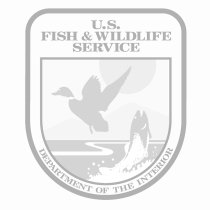Location
States
California, UtahEcosystem
DesertIntroduction
The Mojave Desert Ecoregion covers a diversity of habitats in southern California, southern Nevada, southwestern Utah, and northwestern Arizona. To address the challenges of habitat restoration within the region, the Bureau of Land Management (BLM) created the Mojave Desert Native Plant Program (MDNPP) in 2016. Building on the BLM Native Plant Materials Development and Seeds of Success programs, the MDNPP coordinates seed collection, research and development of provisional and empiric seed transfer zones (STZs), and research on restoration techniques for priority native plant species. The MDNPP also works with partners and commercial seed producers and nurseries to increase availability of ecologically and genetically appropriate native plant materials for the Mojave Desert Ecoregion.
Species that are ecologically appropriate are those that are naturally-occurring members of the local native plant community, and may also include species that are expected to expand their range into a given location in response to climate change climate change
Climate change includes both global warming driven by human-induced emissions of greenhouse gases and the resulting large-scale shifts in weather patterns. Though there have been previous periods of climatic change, since the mid-20th century humans have had an unprecedented impact on Earth's climate system and caused change on a global scale.
Learn more about climate change . Native plant materials that are genetically appropriate are those that are adapted to local climate conditions, as identified through STZs. This may also include plant materials that are potentially adapted to the future climate conditions anticipated at a site.
The MDNPP is one of several BLM ecoregional native plant programs, including the Colorado Plateau Native Plant Program and the Great Basin Native Plant Program. These are collaborative efforts that include participation from multiple federal and state agencies, as well as tribes, non-profit organizations, universities, and others involved with research, native plant materials development, and restoration.
Key Issues Addressed
The U.S. Fish and Wildlife Service’s Recovery Implementation Teams (RITs) for Mojave Desert tortoise recovery have identified habitat restoration as a primary goal. Within the Mojave Desert Ecoregion, over one million acres have burned since 2005, and 2,307,068 acres have burned at least once since 1980. Large-scale wildfires result in loss of shrubs for desert tortoise cover. Invasive annual grasses, such as Mediterranean grass (Schismus spp.) and red brome (Bromus rubens), commonly establish in burned areas. These low-nutrition plants can replace species that are important foods for desert tortoise, impairing tortoise health. Additionally, proliferation of roads, energy development, and urban expansion continue to impact desert tortoise habitat.
Mojave Desert-sourced seed has been limited to primarily wildland seed collections. Annual fluctuations in precipitation impact availability of wildland seed on a year-by-year basis. Development of commercial seed sources to increase production for source-identified Mojave seed can relieve pressure on wildland seed collections, and provide site-appropriate seed to meet restoration needs.
Project Goals
- Develop STZs for priority Mojave Desert restoration species
- Increase commercial availability of ecologically and genetically appropriate native seed
- Improve restoration techniques within the Mojave Desert Ecoregion
Project Highlights
Tools for Managers: USGS released their Climate Distance Mapper Tool in 2018, a web-based tool to map appropriate seed source areas for specific restoration locations. A seed menu tool is anticipated in 2019.
- Developing Seed Transfer Zones (STZs): Common garden studies by USGS, combined with genetic studies through partnerships with USGS and Rancho Santa Ana Botanic Garden, are being used to develop empiric STZs for priority restoration species representative of different plant functional groups (i.e. shrubs, annual forbs, perennial forbs, annual grasses, perennial grasses). The MDNPP has 10 common gardens established across six provisional, climate-based, Mojave STZs. Seed is collected from target plant species across their ranges within the Mojave Desert, and representative of all six provisional STZs. Plants from these seed lineages are grown in the common gardens to test survival, growth, and ecophysiological responses. DNA is extracted from representative wildland tissue samples and analyzed to develop empiric STZs. Work has been completed for desert globemallow (Sphaeralcea ambigua) and Nevada jointfir (Ephedra nevadensis). Current species in the gardens include creosote (Larrea tridentata), white bursage (Ambrosia dumosa), Indian ricegrass (Stipa hymenoides), and yellowcups (Chylismia brevipes). Genetics work is in progress for desert Indianwheat (Plantago ovata), yellowcups, and white bursage.
- Restoration Techniques Development: USGS is testing different methods for Mojave restoration. These include seed encapsulation to protect seeds from granivory, island plantings, aerial seeding, broadcast seeding, decoy seeding to discourage granivore predation, and herbicide treatments combined with seeding.
- Native Plant Materials Development:
- USDA-NRCS Tucson Plant Materials Center is developing southern Nevada germplasm releases through a partnership with the BLM-Southern Nevada District Office. Germplasms are developed by growing seeds sourced from a mix of populations together in “crossing blocks.” The seeds produced from the crossing blocks are designated as a unique germplasm that is, in theory, adapted to a range of environments because of the diversity of genes represented in the original mix-sourced populations. The germplasm seeds are then released for increase by commercial seed growers and help ensure large quantities of native seed are available for restoration. NRCS accompanies each germplasm release with guidelines for commercial growers regarding propagation methods.
- Existing Releases:
- Vegas alkali sacaton (Sporobolus airoides)
- Moapa alkali muhly (Muhlenbergia asperifolia)
- Releases in Progress:
- Big galleta (Hilaria rigida)
- Bush muhly (Muhlenbergia porteri)
- Existing Releases:
- The Living Desert Zoo and Gardens, Palm Desert, CA, has partnered with the MDNPP to grow container plants from wild-collected seed for restoration projects on BLM lands and assist with planting and establishment in the field. They have produced plants to create a diverse pollinator garden at Big Morongo Canyon Preserve, within Sand to Snow National Monument.
- Victor Valley College, Victorville, CA, has partnered with the MDNPP to test methods for growing container plants while producing plants for restoration projects. Students complete these studies through capstone projects, gaining expertise to help them pursue future careers in native plant restoration, while also contributing to restoration projects in the field. They have produced about 1,800 plants for restoration at Afton Canyon, BLM Barstow Field Office, BLM Ridgecrest Field Office, and Dos Palmas Preserve, BLM Palm Springs-South Coast Field Office.
- USDA-NRCS Tucson Plant Materials Center is developing southern Nevada germplasm releases through a partnership with the BLM-Southern Nevada District Office. Germplasms are developed by growing seeds sourced from a mix of populations together in “crossing blocks.” The seeds produced from the crossing blocks are designated as a unique germplasm that is, in theory, adapted to a range of environments because of the diversity of genes represented in the original mix-sourced populations. The germplasm seeds are then released for increase by commercial seed growers and help ensure large quantities of native seed are available for restoration. NRCS accompanies each germplasm release with guidelines for commercial growers regarding propagation methods.
- Tools for Managers: To assist managers with restoration decision making and development of site appropriate seed mixes, the MDNPP partnered with USGS to:
- Develop the Climate Distance Mapper Tool, a web-based tool to map appropriate seed source areas for specific restoration locations.
- Begin developing a seed menu tool to help managers produce restoration seed mixes with appropriate species for different habitat types (anticipated availability in 2019).
- Seed Storage: Large-scale seed production, such as for fire restoration, is expected to go into the national BLM seed warehouse system, including both the Boise, ID and Ely, NV seed warehouses where BLM field offices can order seed. Smaller-scale restoration projects will probably continue to use the national Seed Extractory in Bend, Oregon, or local field/district office storage if available.
Lessons Learned
Partnerships and communication are critical for working on an ecoregional scale. Similar concerns and needs transcend land management boundaries and agencies, and funds to address these through studies and plant materials development are limited. Partnerships with researchers facilitate ecoregion-wide studies that inform restoration decisions and tactics across administrative boundaries. The MDNPP facilitates information sharing across the ecoregion, identifying shared needs, and sharing information on available resources and tools.
Many of the key restoration species for the Mojave are shrubs, and annual and perennial forbs. These species are often expensive and challenging for commercial seed production. Commercial growers are reluctant to grow these species without a guaranteed market to purchase the seed. Working on an ecoregional scale, the MDNPP is able to coordinate across office and agency boundaries to identify priority species and quantity needs, and communicate these needs to prospective growers. At the same time, the MDNPP can coordinate studies designed to improve restoration success, thereby increasing land manager confidence in restoration and creating the native seed demand that can support commercial seed production. Coordination of availability with demand can help to meet needs in the field.
Priority species were initially developed with a focus on desert tortoise forage and cover species. Following release of the National Strategy to Promote the Health of Honey Bees and Other Pollinators, an additional emphasis on species for pollinators was added. Fortunately, many species important for desert tortoise are also valuable for pollinators. Much of the ecoregional demand for restoration seeding remains focused on restoring desert tortoise habitat.
Working on the ecoregional scale is particularly valuable for large-scale restoration needs, such as wildfire restoration, where the focus is on common and widespread native plant species. Localized projects and studies remain important for site specific restoration concerns, and may include locally important species not included in the broader MDNPP focus. Concerns such as hybridization of restoration species with rare plant species and other local concerns will need to be addressed on a local scale.
Next Steps
- Develop more propagation and harvesting protocols for seed increase production, and promote commercial seed production
- Continue STZ studies to include at least two species for each plant functional group, such as shrubs, grasses, and forbs
- Develop and test techniques to improve restoration success
Funding Partner
Resources
- Native Seed and Plant Material Programs:Ecoregional Program Website
- USGS Climate Distance Mapper Tool
- Shryock, Daniel F., et al. “Landscape Genetic Approaches to Guide Native Plant Restoration in the Mojave Desert.” Ecological Applications 27(2): 429–445.
- USGS Webpage: Native Plant Materials for Ecological Restoration of Degraded Drylands
- Esque, Todd et al. “Identifying Native Plant Species for Seed Collectors, Growers, and Restoration Specialists to Repair Mojave Desert Tortoise Habitats” Southwest Chapter Conference, Society for Ecological Restoration, 9 November 2016, Springs Preserve, Las Vegas, Nevada.
- Tucson Plant Materials Center (AZPMC), serving areas in the States of Arizona, California, Nevada, New Mexico, and Utah
- Comer, P., P. et al. (2013). Mojave Basin and Range Rapid Ecoregional Assessment Report. Prepared for the U.S. Department of the Interior, Bureau of Land Management. 173 pp + Appendices.
- NRCS-Tucson Plant Materials Center
- U.S. Army - Fort Irwin National Training Center
- Department of Energy - Nevada National Security Site
Contact
Judy Perkins, BLM-California: jlperkins@blm.gov
Case Study Lead Authors
- Ashlee Simpson, CART Graduate Research Assistant, University of Arizona
- Amanda Webb, CART Research Specialist, University of Arizona
Suggested Citation
Simpson, A., C., and Webb, A., D. (2018). “Mojave Desert Native Plant Program.” CART. Retrieved from https://www.fws.gov/project/mojave-desert-native-plants.










